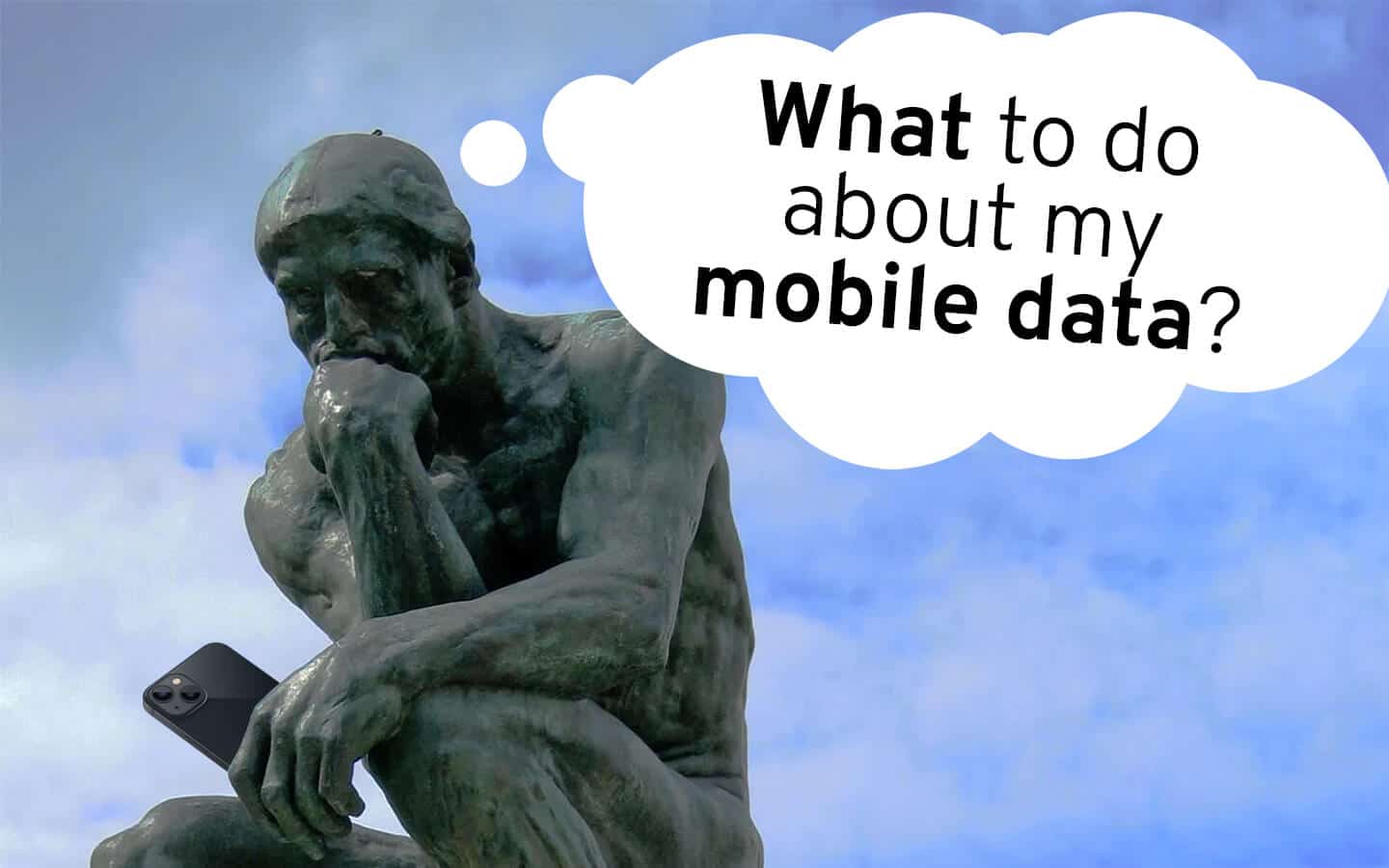
Choosing a mobile plan for individual use may be straightforward, but choices get a lot more complicated for businesses. Unlimited data plans may seem like a simple solution to avoid overage fees and ensure your staff stays online.
In reality, unlimited data plans often have an unspoken limit. These implied rules can cause your employees to lose connection. Ultimately, you end up paying for services you don’t receive.
Plus, a business’s priorities may vary by staff roles. Employees with limited access to cell coverage and Wi-Fi may use their phones as mobile hotspots. Meanwhile, entry-level employees, remote workers, and in-office teams have reliable access to internet and cellular coverage.
This blog breaks down exactly how unlimited data plans work and why pooled data plans offer a better value. Find out why partnering with a managed mobility services provider may be the most cost-effective option for your business.
The hidden costs of unlimited data plans: slower speeds
Data plans primarily come in two varieties: unlimited and shared data groups. Many companies believe phone plans with unlimited data are the most convenient and cost-effective option. However, even the best plans with unlimited data aren’t exactly what they seem.
Companies often gravitate to unlimited plans because they believe employees can use as much data as they want. Plus, companies don’t have to pay extra fees for using too much data. However, unlimited plans often have a hidden cap, and speeds are likely to be slower. In fact, slow speeds may make data almost unusable until the monthly allotment resets.
What does unlimited data mean?
Although they offer unlimited data, the fine print often allows carriers to purposely slow download speeds. Once users hit a given threshold, carriers can throttle data transmission speeds.
How to get the best value for your data plan:
- Understand what exactly the unlimited data plan offers
- Find out when the carrier begins to slow down data speeds
Keep in mind: Carriers reserve the option to throttle lines at any time. Companies that manage their own mobile accounts often find themselves in a dilemma we’ve observed many times before. They’ve reached their data cap, and now workers are scrambling to figure out how to get back online.
LINQ uses shared data groups to keep costs low and deliver reliable high-speed data. Our mobile account management experts monitor client accounts in real-time to ensure maximum efficiency.
How LINQ uses shared data plans to mix and match for the best user combination
Shared data groups pool a set amount of data shared by several users. Once the group hits the data limit, the carrier can add more data, and the company pays for the additional usage.
LINQ helps companies get the most value from their data plans. Our analysts work hard to manage data plans in real-time. We make adjustments to accounts as needed to ensure the connection is fast and always available.
Shared groups require careful analysis to ensure each line maintains the best mix of employees.
How LINQ can help: We strategically combine high- and low-usage lines to deliver the best value. When we notice one line accounts for significant data usage, we combine them with several low-usage lines. Then, we consistently monitor accounts to ensure companies get the most cost-effective cell phone plans.
Unlimited data plans throttle hotspot data
Mobile hotspots are essential to keeping employees connected in areas without access to Wi-Fi or robust cell coverage. However, hotspots can also hog data usage, especially if users are loading pictures or videos. Our experts know how to configure mobile accounts to take full advantage of your data plan – and deliver guaranteed savings.
Data plans track hotspots separately from mobile data. Data goes fast when using a mobile hotspot – especially if multiple users on one account are using mobile hotspots.
- 1 GB of data allows users to browse the internet for roughly 12 hours or watch 2 hours of video
- Loading pictures and high-definition videos even faster when loading pictures or high-definition videos
Once users hit the data cap, data becomes basically unusable until the data period resets.
Did you know? Carriers are more likely to throttle data when users activate a hotspot or stream video. Even before users hit their data limits, carriers often single out high-usage lines. That means companies whose employees use their mobile devices as hotspots or to download video are more susceptible to throttling.
The alternative to unlimited data plans
Companies do have the option to put mobile hotspots on their own plans. However, they’re handled just like any other data plan. Unlimited plans slow to an unusable pace after the user hits their data limit. If the plan has an allotment, the company will pay extra for going over.
LINQ expert tip: Employees who often use mobile hotspots would be better off using a dedicated hotspot device. Among other advantages, such devices typically come with separate data plans likely to have a higher data allowance.
Choosing the best data plan for your company
Your chosen data plan affects every aspect of your business – from employee productivity to your operational costs. Cell phone data plans are complex, especially on an enterprise scale. A managed mobility services provider helps you identify the ideal plan and negotiate the best rates. Plus, we handle the ongoing adjustments that keep employees connected at high speed.
How do we do it all? Get a peek at the secret sauce that enables LINQ experts to save your company time and money. Download the e-book to see how we create efficiencies you never would have considered.



